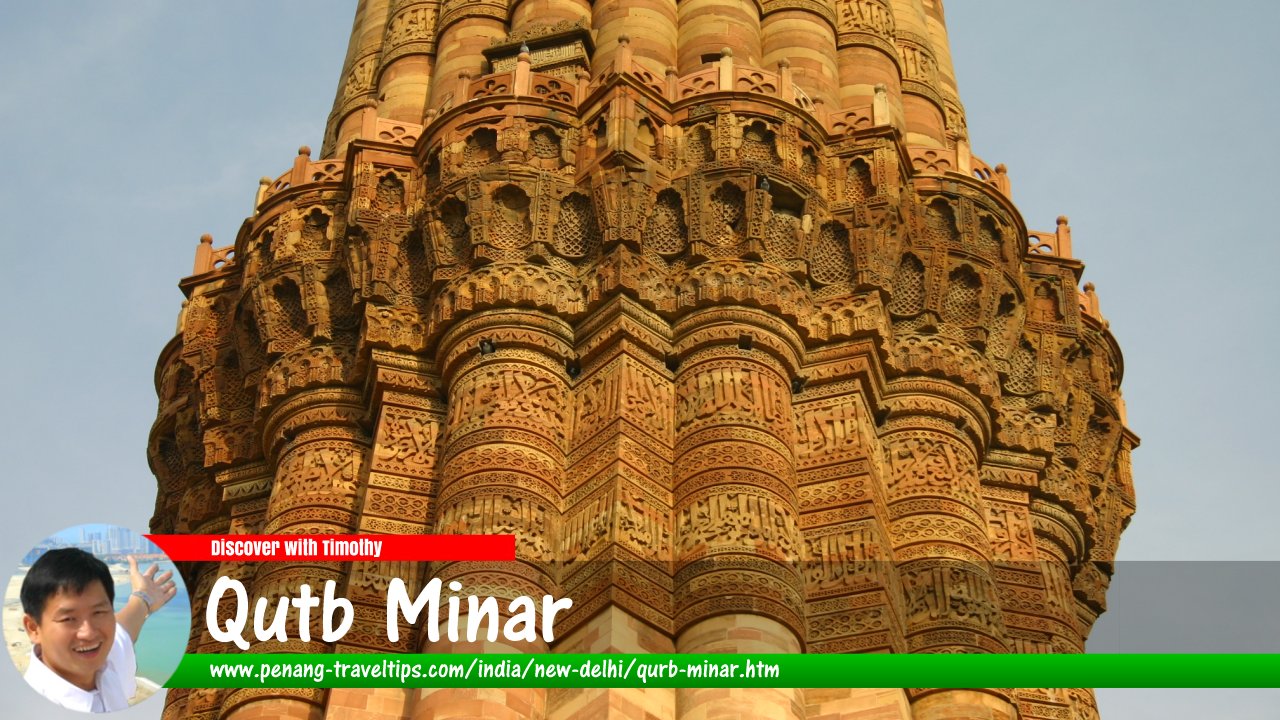 Qutb Minar, New Delhi (19 November 2004)
Qutb Minar, New Delhi (19 November 2004)
Qutb Minar (GPS: 28.52341, 77.18517) is a stone tower in New Delhi, India. Also written Qutb Minar, it is the world's tallest stone tower. Qutb Minar is inscribed as one of the three World Heritage Sites in Delhi under "Qutb Minar and its Monuments, Delhi".
Inscription Details
Location: N28 31 33.0 E77 11 07.0Inscription Year: 1993
Type of Site: Cultural
Inscription Criteria: IV
Construction of the Qutb Minar complex was started in 1199 AD by Qutbuddin Aibak and completed by the sultan's successor and son-in-law, Iltutmish. Its construction heralded the start of Muslim reign in the Delhi region. Qutb Minar is 72.5 m high. It has 379 steps from the bottom to the top. It tapers towards the top - the diameter at the base is 14.3 m while at the top floor it is only 2.7 m.
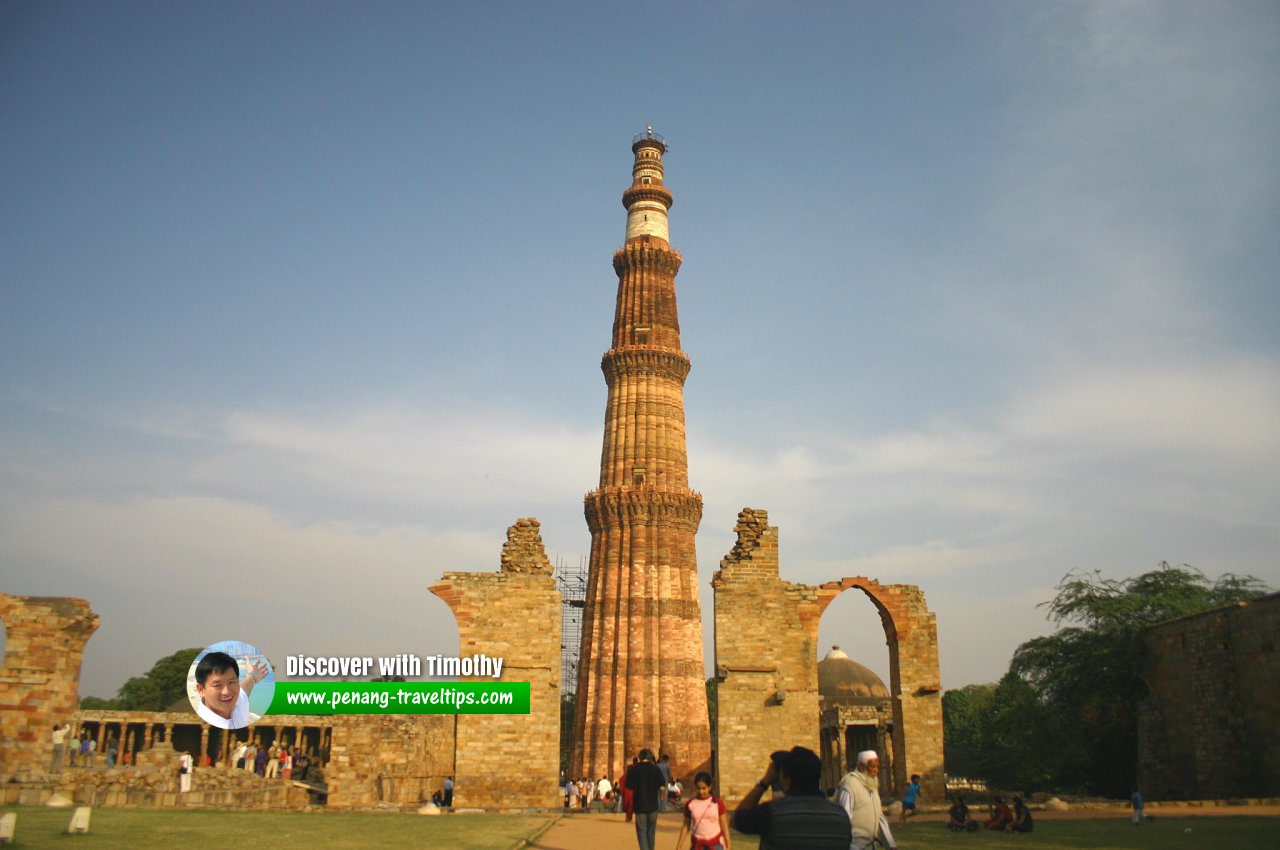 The Qutb Minar, as seen from the direction of Alauddin Khalji's Tomb. (19 November, 2004)
The Qutb Minar, as seen from the direction of Alauddin Khalji's Tomb. (19 November, 2004)
Qutb Minar represents the finest Islamic structure ever raised in India. It is made of red and buff sandstone. Aibak constructed the first floor. Three more storeys were added by Iltutmish. Projected balconies supported by stone brackets surround each of the storeys. The stone brackets are decorated with honeycomb design, more conspicuously in the first storey. The tower is further decorated with floral motif and arabesque. The inscriptions on the surface of the Minar commemorated repairs undertaken by Firoz Shah Tughlaq (AD 1351-88) and Sikandar Lodi (AD 1489-1517). Firoz Shah renovated the top floor and added marble to the building.
Standing within the compound of Qutb Minar is the Quwwat-ul-Islam Mosque. It was built by Qutbuddin Aibak in AD 1198, and is the earliest mosque built by Delhi Sultans. The mosque has a rectangular courtyard enclosed by cloisters. Its columns were built using material taken from 27 Hindu and Jain temples, which were demolished to construct the mosque. Even today, Hindu motifs such as tasselled ropes and bells, are visible on these pillars. In all likelihood, the Qutb Minar was built for the call of azaan by the muezzin, and represents Islam's entry into a previously Hindu region.
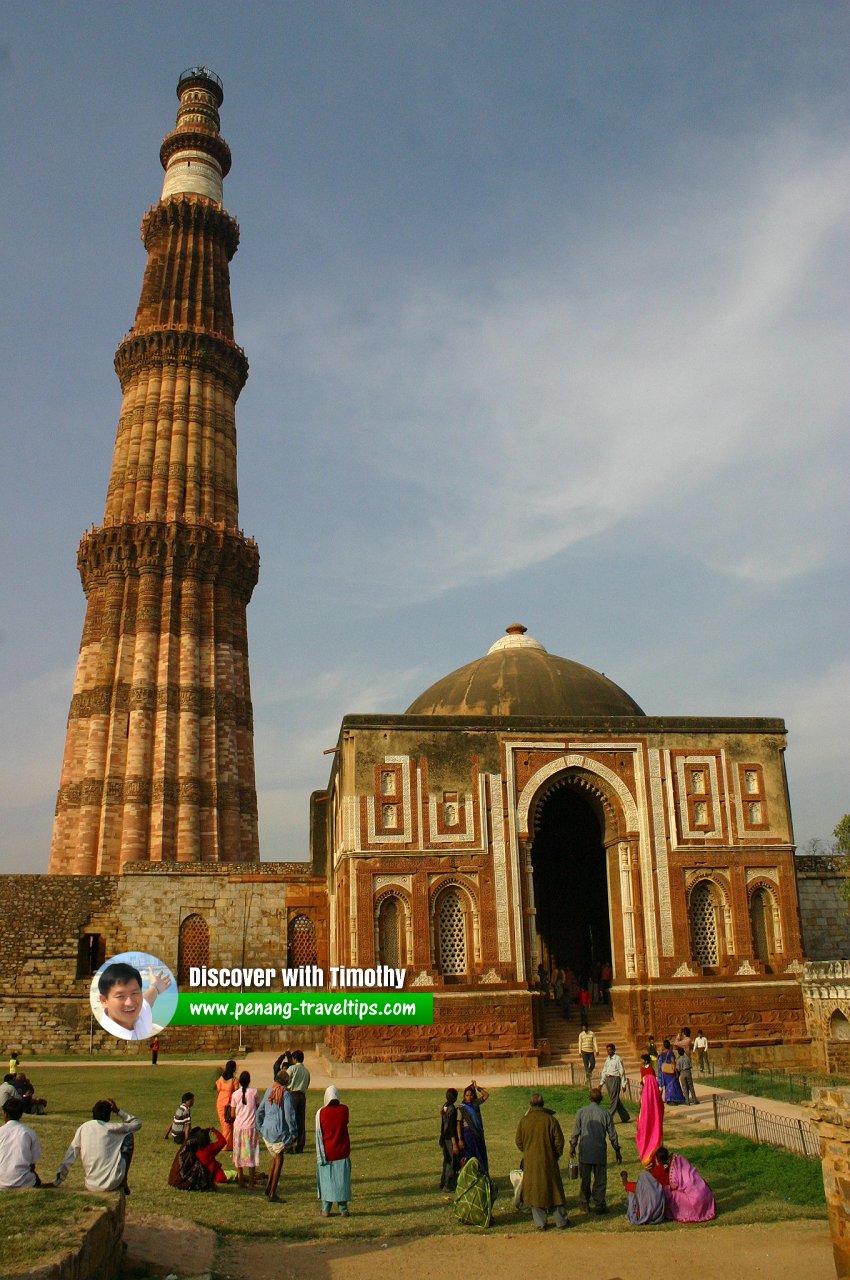 Here Qutb Minar is viewed with Alai Darwaza to its right. The Alai Darwaza is one of the gates into the complex. It was erected in 1311 by Alauddin Khalji. (19 November, 2004)
Here Qutb Minar is viewed with Alai Darwaza to its right. The Alai Darwaza is one of the gates into the complex. It was erected in 1311 by Alauddin Khalji. (19 November, 2004)
Standing within the mosque complex is the Iron Pillar. It dates back to 4th century AD. On the pillar is an inscription saying that it was a flagstaff erected in honor of the Hindu god, Vishnu, and in the memory of the Gupta King Chandragupta II (BC375-413). The pillar represents India's achievements in metallurgy even at such ancient times. Made of 98 per cent wrought iron, it has stood for the past 1,600 years without rusting or decomposing.
Alai Darwaza, the southern gateway of the Quwwat-ul-Islam mosque, was constructed by Alauddin Khalji in AD 1311. The gateway is a horseshoe arch and the first time a true dome is seen in Indian Muslim architecture. Alauddin Khalji also built a madrasa (religious school) towards the southwest of Qutb Minar to impart religious education to the children.
Ruins of the Quwwat-ul-Islam Mosque within the Qutb Minar complex. Note the Hindu motifs on the carved pillars (right and below). Qutbuddin Aibak, the Delhi sultan who built this complex, demolished 27 Hindu and Jain temples to built this mosque, using material taken from them.
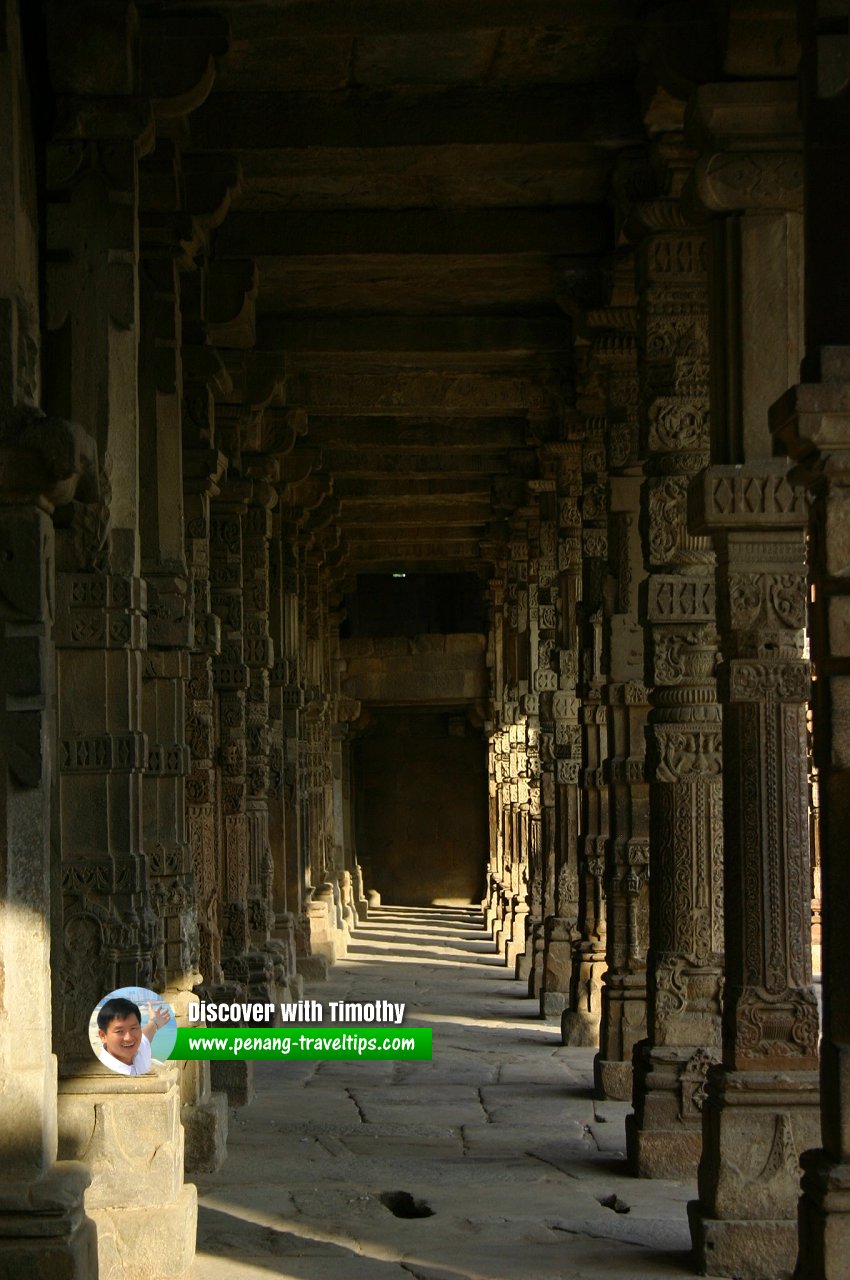
Ruins of Quwwat-ul-Islam Mosque (19 November, 2004)

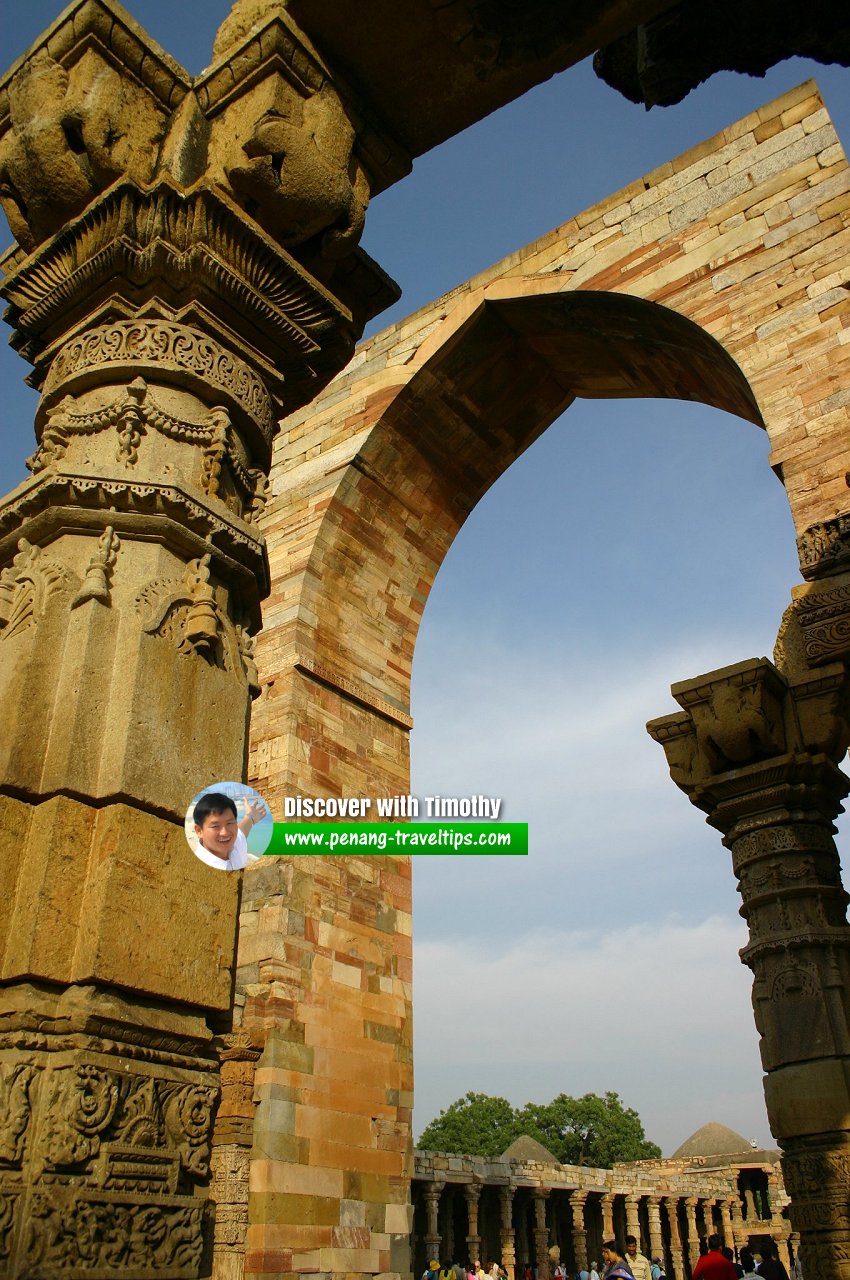
Ruins of the Quwwat-ul-Islam Mosque (19 November, 2004)

To the north of the Qutb Minar tower is a massive, but incomplete tower. That is the Alai Minar. Alauddin Khalji started building it, with the intention of building a minar which is twice the height of Qutb Minar. However, he only managed to complete the first storey, which now has a height of 25m.
The Tomb of IItutmish is also within the Qutb Minar complex. It was built in AD 1235. The tomb is just a plain square chamber made of red sandstone. It is embellished with a profusion of inscriptions, geometrical and arabesque patterns in Saracenic tradition on the entrances and the whole of the interior. It used to have a dome which collapsed because the walls unable to bear its weight.
The Qutb Minar complex is today one of the three World Heritage Sites in Delhi alongside Humayun's Tomb and Red Fort.
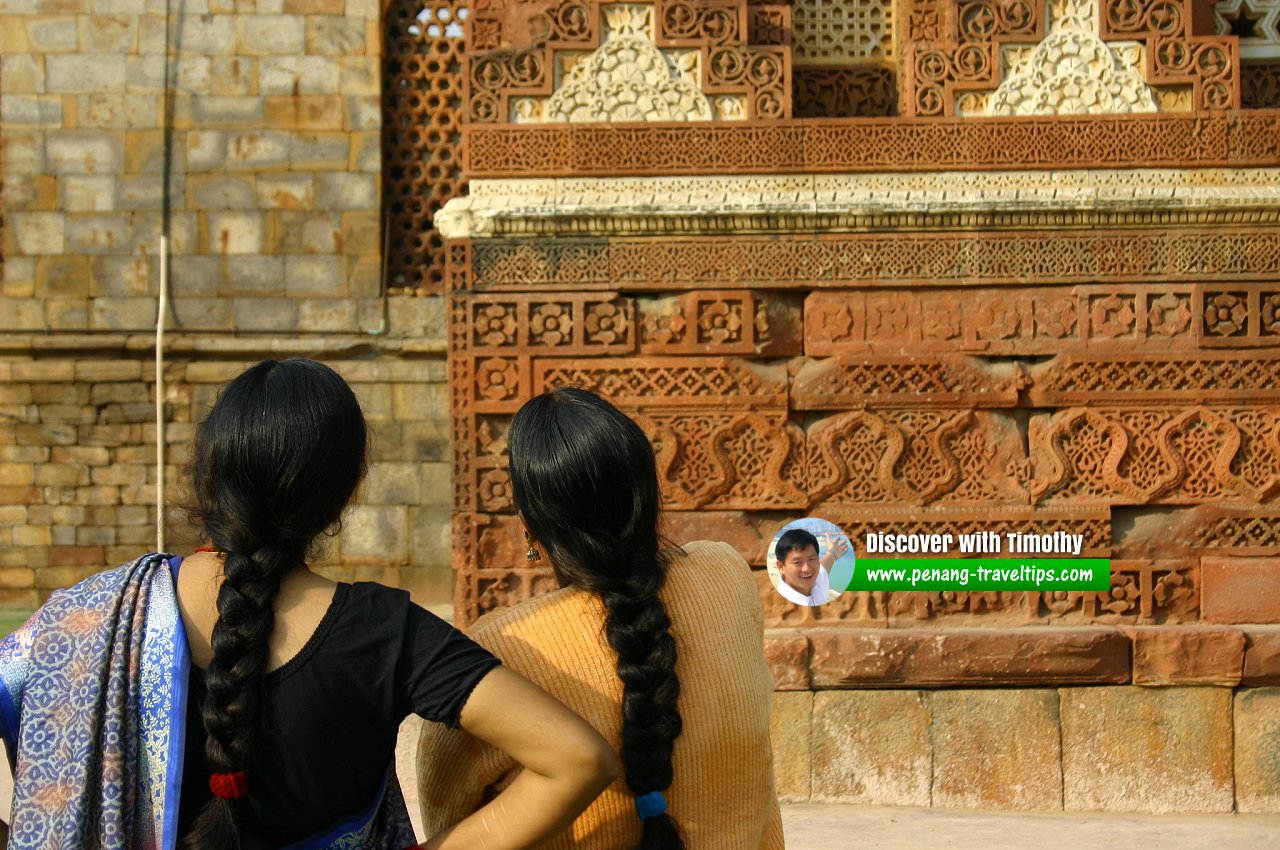 Visitors admiring the carvings on the walls. (19 November, 2004)
Visitors admiring the carvings on the walls. (19 November, 2004)
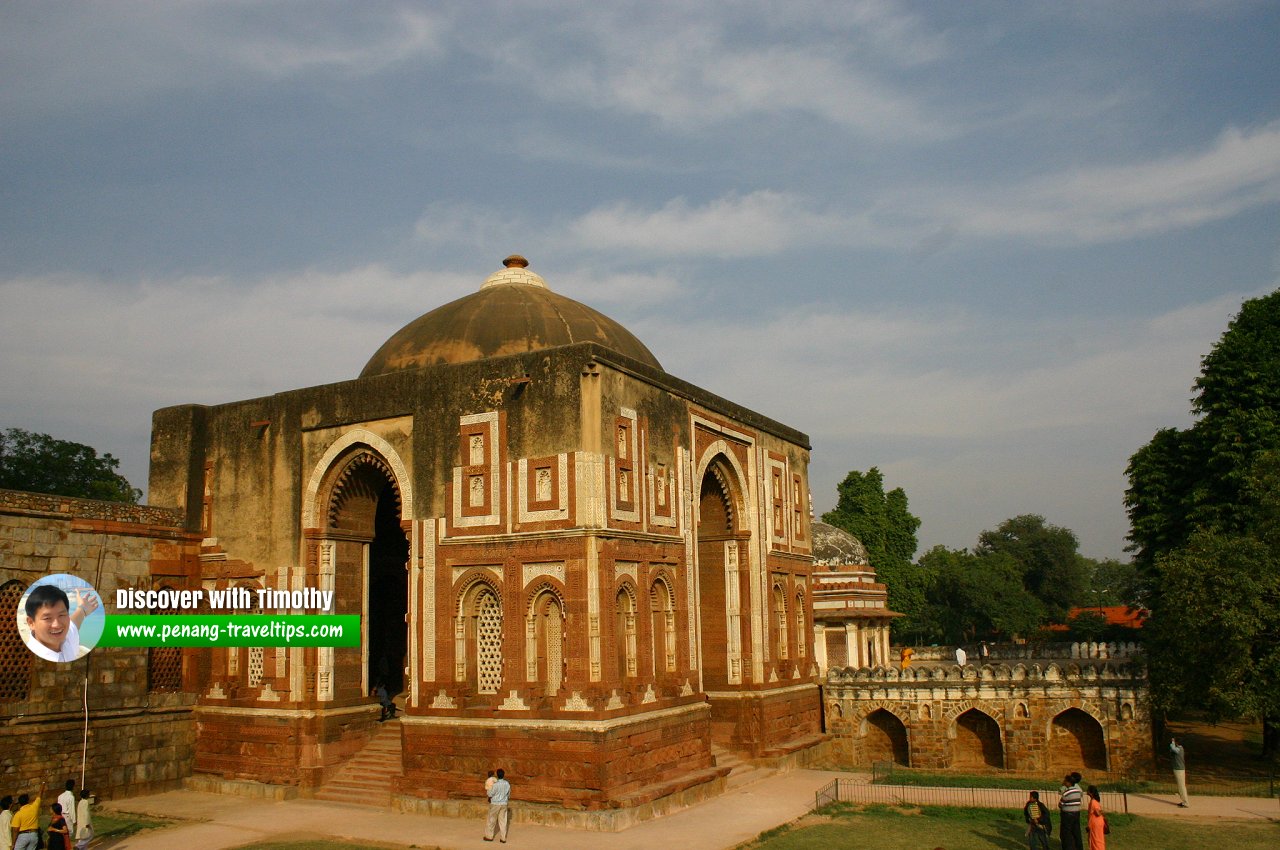 Alai Darwaza, an imposing gate into the complex, was erected in 1311 by Alauddin Khalji. (19 November, 2004)
Alai Darwaza, an imposing gate into the complex, was erected in 1311 by Alauddin Khalji. (19 November, 2004)
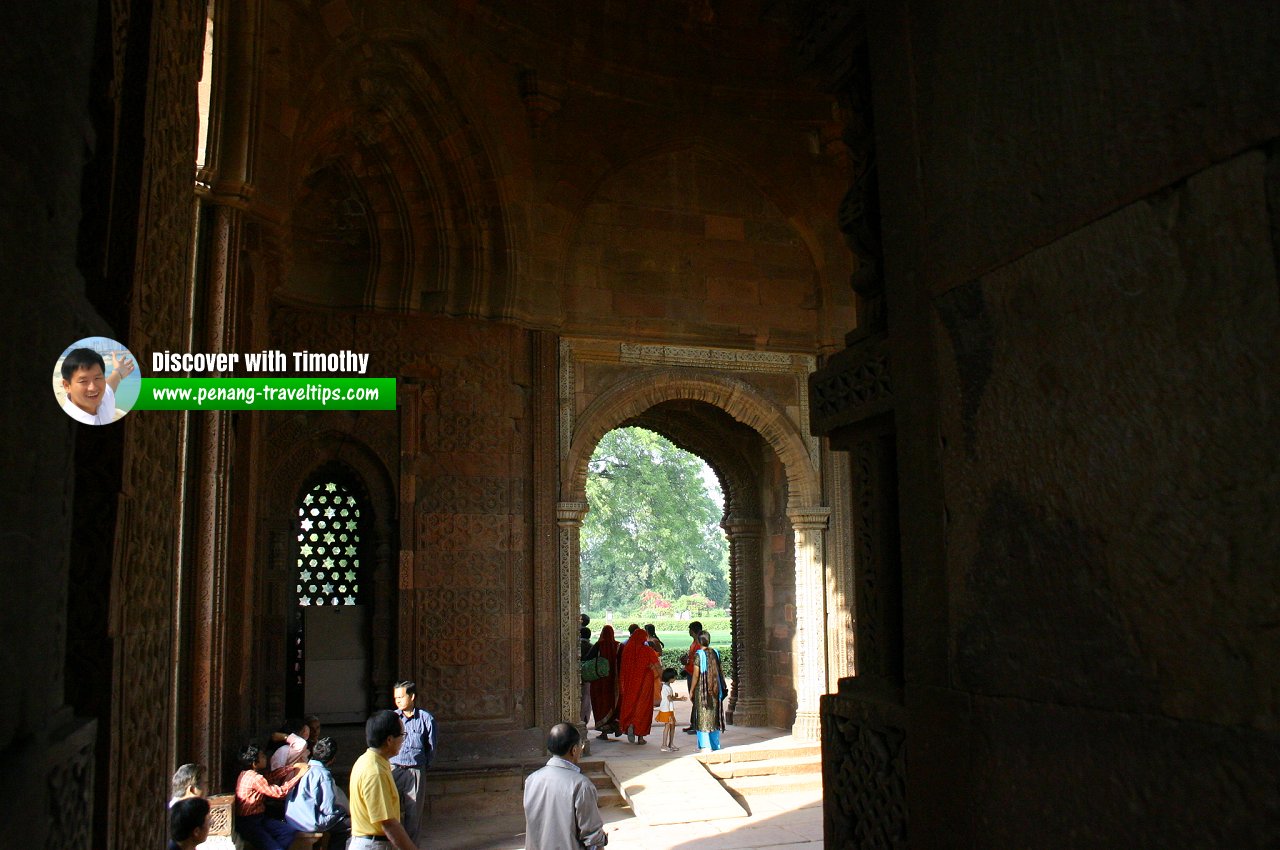
Inside the Alai Darwaza (19 November, 2004)

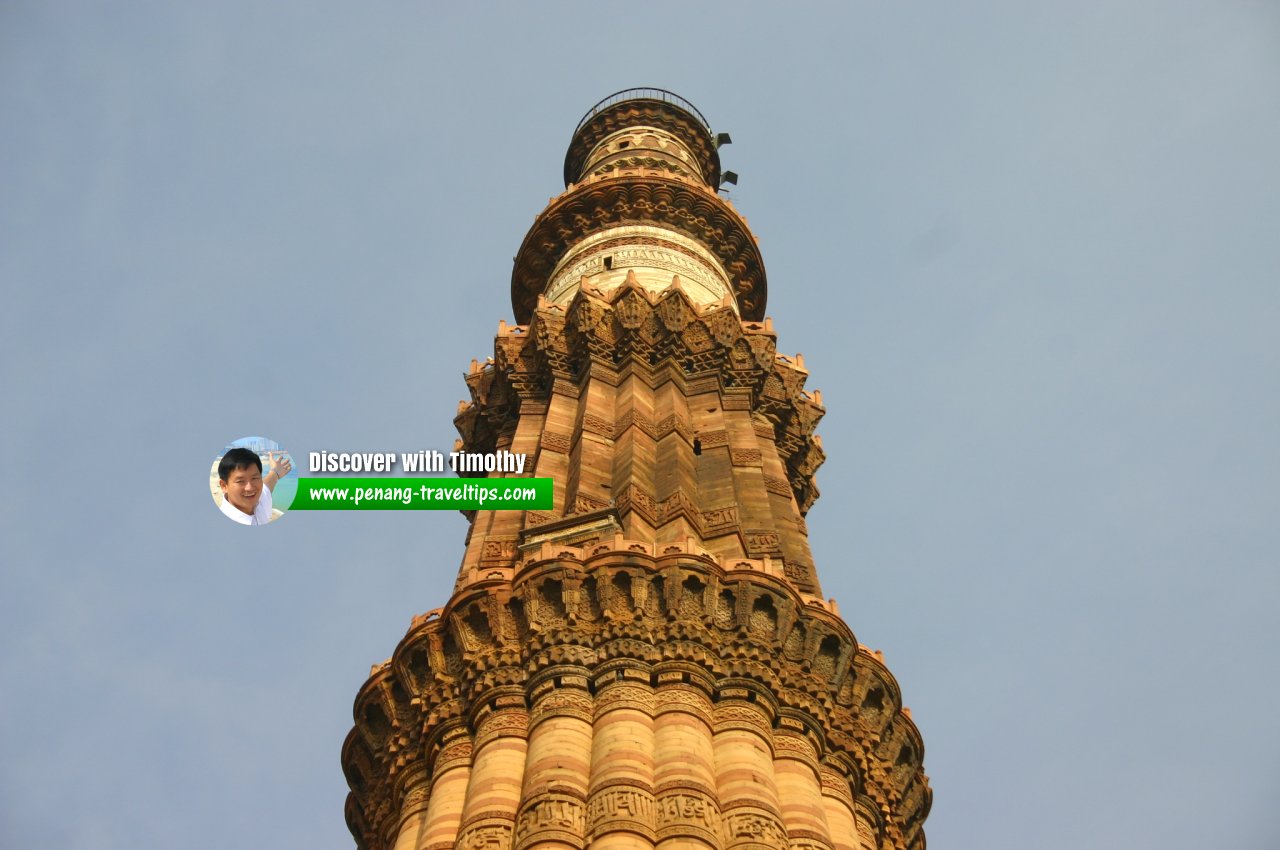 Qutb Minar, one of the most recognisable icons of India. (19 November, 2004)
Qutb Minar, one of the most recognisable icons of India. (19 November, 2004)
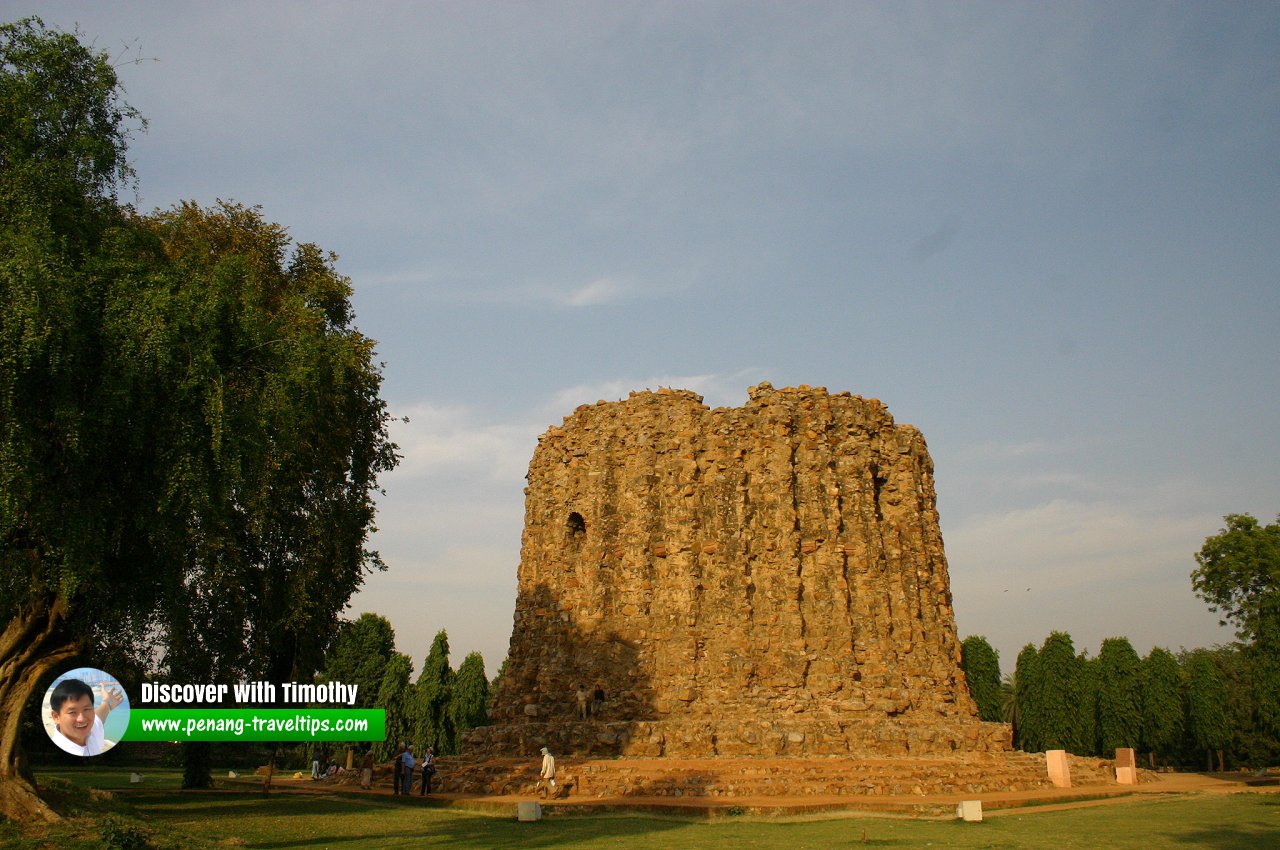 This is the Alai Minar, an incomplete tower constructed by Alauddin Khalji. If completed, it would be twice the height of Qutb Minar. However, Alauddin Khalji died just when the tower reached its first storey. (19 November, 2004)
This is the Alai Minar, an incomplete tower constructed by Alauddin Khalji. If completed, it would be twice the height of Qutb Minar. However, Alauddin Khalji died just when the tower reached its first storey. (19 November, 2004)
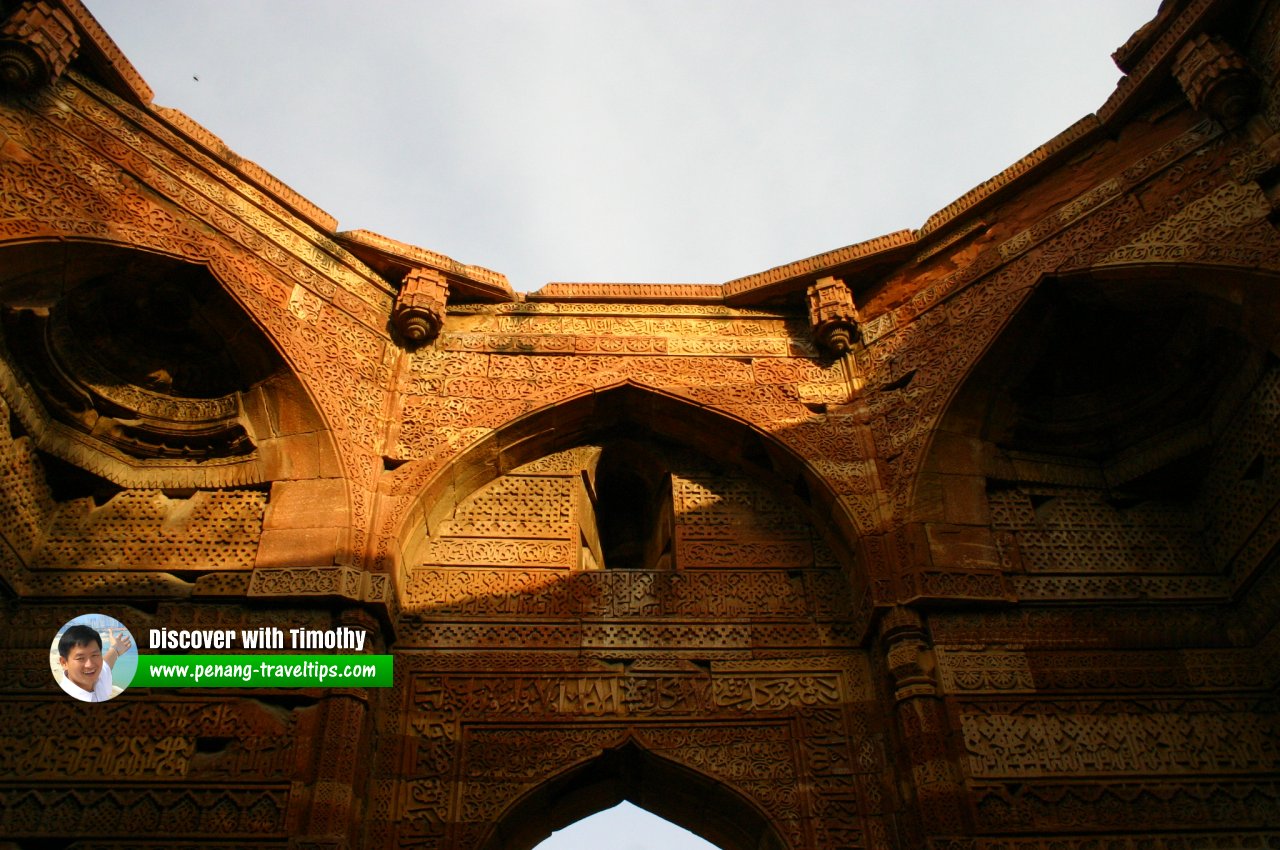
Iltutmish's Tomb, also within the Qutb Minar complex, is just a plain square chamber from the outside. But within, it is profusely embellished with inscriptions and geometric patterns. (19 November, 2004)

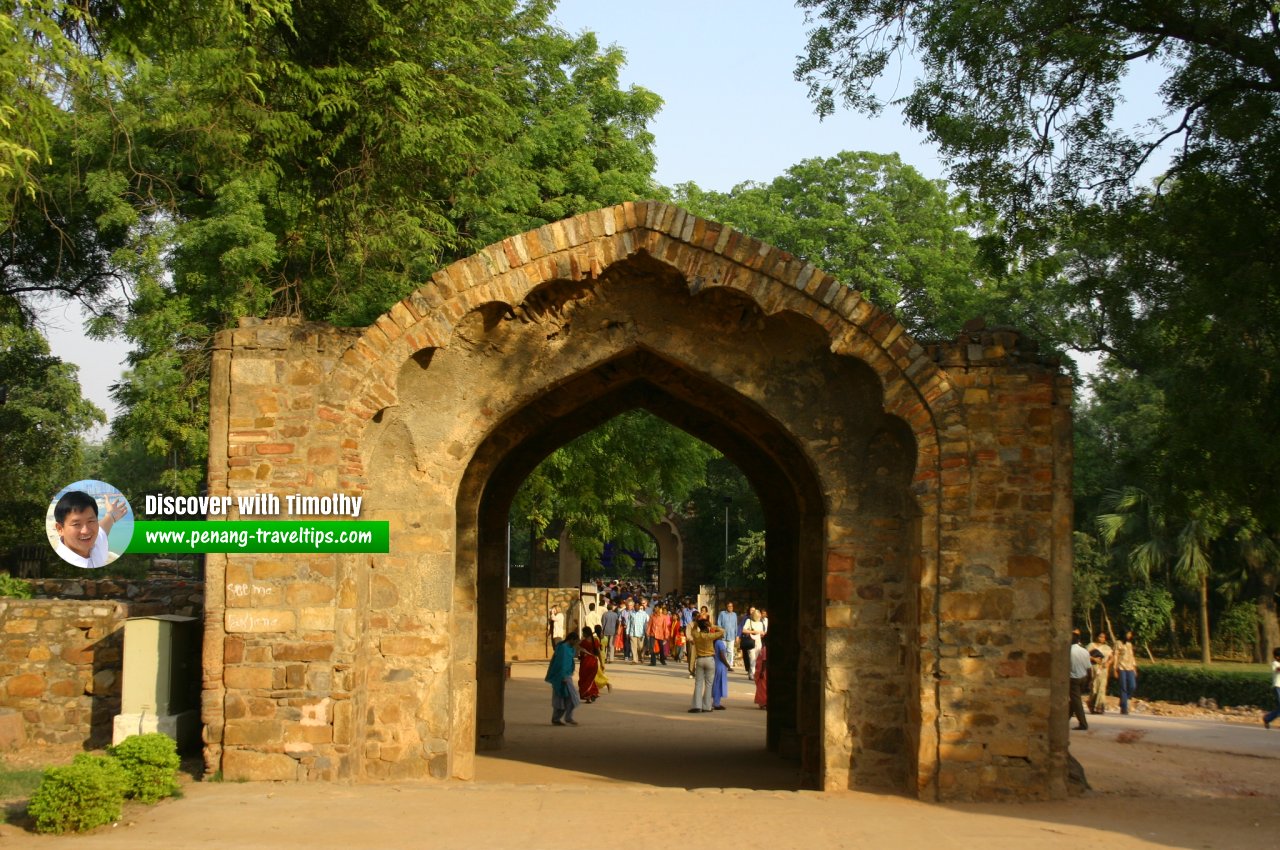
The Exit. (19 November, 2004)

Qutb Minar is  on the Map of New Delhi, India
on the Map of New Delhi, India
List of Historic Buildings in India; back to New Delhi, India
 Latest updates on Penang Travel Tips
Latest updates on Penang Travel Tips

Copyright © 2003-2025 Timothy Tye. All Rights Reserved.

 Go Back
Go Back